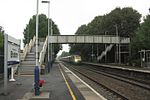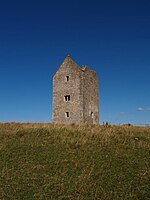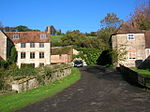Bruton railway cutting
BrutonGeology of SomersetRail transport in SomersetRailway cuttings in the United KingdomSites of Special Scientific Interest in Somerset ... and 2 more
Sites of Special Scientific Interest notified in 1971Use British English from January 2017

Bruton Railway Cutting is a 1.7 hectare geological Site of Special Scientific Interest at Bruton in Somerset, notified in 1971. The geology exposed in the area near Bruton station (which opened in 1856 on what is now the Heart of Wessex Line) is from the Bathonian epoch of the Middle Jurassic. The citation for the site describes it as one of the best places in England to demonstrate the stratigraphic distinction of ammonites in the subcontractus zone and the morrisi zone.
Excerpt from the Wikipedia article Bruton railway cutting (License: CC BY-SA 3.0, Authors, Images).Bruton railway cutting
Darkey Lane,
Geographical coordinates (GPS) Address Nearby Places Show on map
Geographical coordinates (GPS)
| Latitude | Longitude |
|---|---|
| N 51.11164 ° | E -2.44707 ° |
Address
Bruton
Darkey Lane
BA10 0JD
England, United Kingdom
Open on Google Maps











